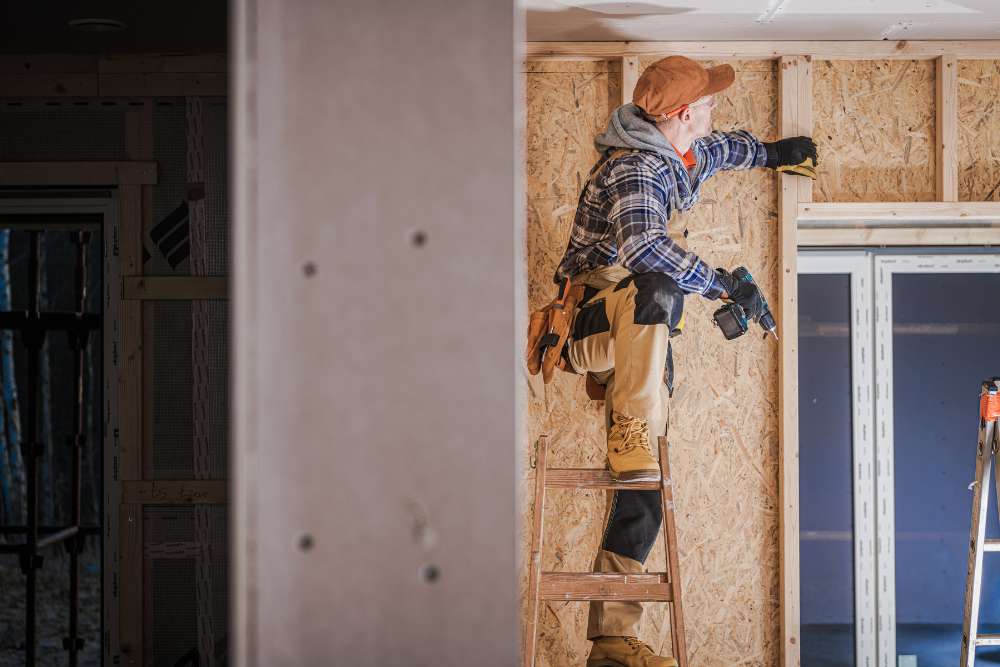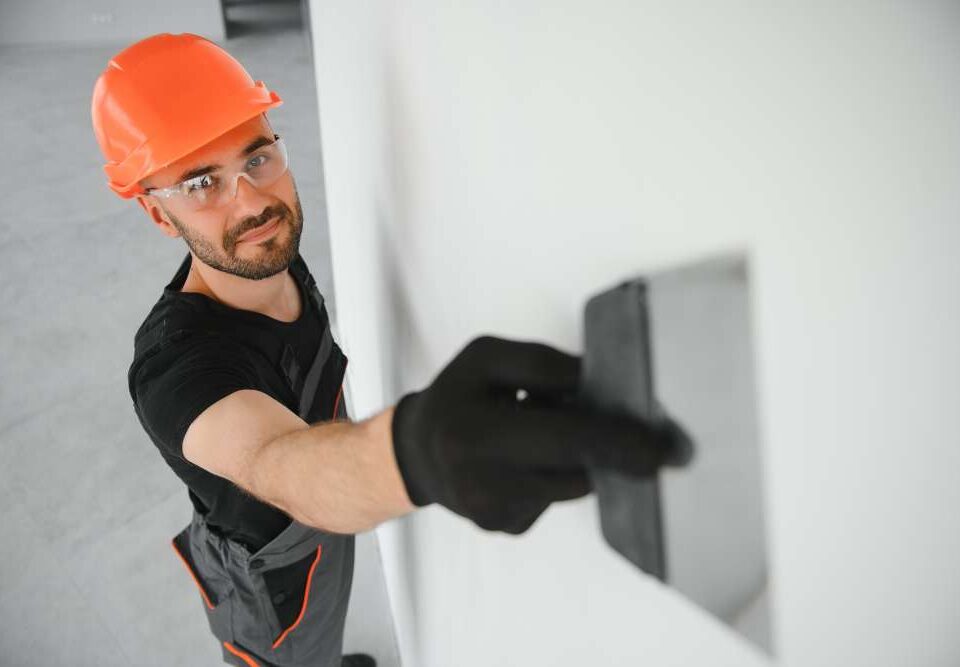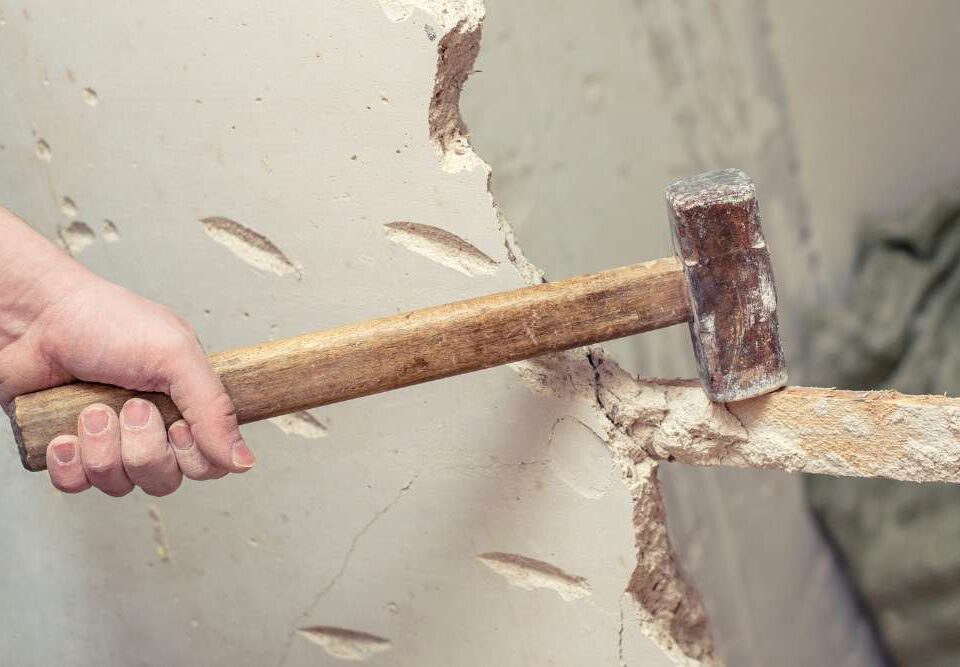
How Kitchen Demolition Can Open Up Your Space
September 8, 2025
What You Need to Know Before Starting Bathroom Demolition
September 8, 2025Drywall Removal How It Fits Into Your Home Renovation Plan
Every home renovation project begins with decisions that shape the outcome, and one of the most overlooked yet vital steps is drywall removal. While it may seem like a straightforward task, taking down drywall opens the door to a range of opportunities for redesigning your home. It is not just about tearing down walls—it’s about creating access, revealing hidden issues, and preparing the space for the improvements you envision. Without this stage, updates often remain surface-level rather than transformative.
Proper drywall removal lays the foundation for modern living spaces that are functional, safe, and attractive. Whether you are expanding a room, upgrading electrical systems, or reimagining your layout, removing drywall clears the way for possibility. Far from being a minor detail, it sets the tone for the entire renovation journey.
Revealing hidden opportunities behind drywall
When drywall is removed, what lies beneath often surprises homeowners. Beneath the clean finish are pipes, wires, and structural components that tell the story of how the house was built. This stage uncovers opportunities that might not have been considered during initial planning. Relocating outlets, rerouting plumbing, or reinforcing framing becomes far easier once the drywall is out of the way.
Beyond technical adjustments, the demolition process also sparks new ideas. A wall you assumed was immovable may reveal itself to be non-load-bearing, opening up possibilities for open concepts or creative storage solutions. Removing drywall provides a realistic view of the home’s framework, helping you envision what could be changed and what must remain.
Preparing for system upgrades during renovation
Drywall removal creates essential access for upgrading the systems that make a home comfortable and safe. Electrical wiring, plumbing, and insulation all sit behind those flat surfaces, hidden until renovation work begins. Once exposed, professionals can assess whether these systems meet modern standards or if upgrades are needed. Without drywall removal, adding circuits for new appliances or improving insulation efficiency would be far more difficult.
This process is especially valuable in older homes where outdated systems might no longer meet safety codes. Bringing wiring and plumbing up to date enhances both convenience and safety. Even small changes, such as adding new lighting or updating water lines, become much simpler when drywall is removed. By addressing these upgrades early, you prevent future issues from undermining the beauty and functionality of your finished renovation.

Making space for layout transformations
Homeowners often dream of open layouts or reimagined spaces, but achieving that vision requires a blank slate. Removing drywall creates this foundation by stripping away barriers that divide rooms or conceal structural elements. Suddenly, what once felt cramped can be re-envisioned as a fluid, interconnected area. This step paves the way for modern floor plans that prioritize openness, light, and movement.
By removing walls covered in drywall, you gain insight into which areas can be altered without jeopardizing structural integrity. This awareness allows for practical decisions about expanding living areas, combining rooms, or even carving out new functional spaces like home offices or pantries. Layout transformation begins with the courage to dismantle what no longer works.
Addressing moisture and insulation concerns
Drywall often conceals problems that silently affect comfort and health. Moisture damage, mold growth, or inadequate insulation may go unnoticed until walls are opened during renovation. Removing drywall brings these hidden issues into view, providing an opportunity to address them before they worsen. What initially appears to be cosmetic work becomes a critical step in protecting both the structure and the household’s well-being.
Insulation improvements are particularly impactful once drywall is removed. Upgrading to modern, energy-efficient insulation reduces heating and cooling costs while creating a more consistent indoor climate. Likewise, resolving moisture problems at this stage prevents future damage that could compromise the entire renovation. While drywall removal might seem like an extra step, it is often the key to ensuring your renovation results in a home that is not only beautiful but also healthier and more energy-efficient for years to come.
Enhancing structural integrity and safety
Renovations are not only about appearance—they also present an opportunity to strengthen the home itself. By removing drywall, contractors gain direct access to framing, beams, and other structural components. This visibility makes it possible to reinforce weak spots, repair damage, or make adjustments to better support the new layout. Safety becomes a built-in benefit of demolition, ensuring that your renovation rests on a strong foundation.
Uncovering these details early prevents costly setbacks later. Discovering compromised wood or unstable framing after finishing work has begun can derail a project. Addressing them during the drywall removal stage saves time and resources while giving you peace of mind. Knowing that your renovation is supported by solid construction enhances both value and safety. Far from being an inconvenience, drywall removal is a proactive step that ensures the transformation of your space is both secure and lasting.
Allowing creativity in design possibilities
With drywall out of the way, design potential expands dramatically. The once flat, uniform surfaces now become opportunities for new textures, built-in features, or reconfigured spaces. Demolition reveals the raw bones of your home, which designers and homeowners can then shape into something more expressive and tailored. Removing drywall creates flexibility that rigid layouts often suppress.
Imagine discovering the chance to add recessed shelving, install custom lighting, or create dramatic architectural details like archways. These creative touches rarely happen without first clearing out existing drywall. By starting with an open canvas, you allow inspiration to flow freely, unburdened by the limitations of what was already there. In this sense, drywall removal is as much about possibility as practicality, sparking ideas that make your renovation personal. It’s the difference between settling for standard upgrades and creating a home that reflects your individuality.
Improving efficiency in renovation workflow
Renovation projects often involve multiple contractors—plumbers, electricians, and carpenters—all working within the same timeline. Drywall removal streamlines their workflow by giving each trade easier access to the areas they need to work on. Without barriers in place, tasks that would have been complicated and time-consuming can be completed more efficiently, saving both time and labor costs.
This efficiency doesn’t just benefit contractors. Homeowners also enjoy shorter project timelines and fewer disruptions to daily life. A renovation that might have dragged on for weeks can be completed more smoothly when everyone has the access they need. Demolition may seem like a small piece of the process, but it often sets the tone for how efficiently the rest of the renovation unfolds. Removing drywall, therefore, is not simply a matter of clearing space—it’s a smart way to accelerate the entire project’s progress.
Increasing property value through modernization
Buyers consistently rank updated kitchens and modern layouts as top priorities, and drywall removal is a step toward achieving those goals. By clearing away old walls and creating opportunities for upgrades, you make your home more appealing in today’s market. Fresh finishes, updated systems, and open designs stand out to potential buyers, often translating into higher resale value.
Even if selling isn’t in your immediate plans, drywall removal contributes to a more future-ready home. It allows for upgrades that keep the property competitive with newer builds, ensuring your investment holds strong over time. Rather than viewing it as a temporary inconvenience, homeowners can see drywall removal as an essential step in long-term value creation.
Supporting sustainability through recycling materials
Drywall removal doesn’t have to mean excessive waste. Many of the materials removed can be recycled or repurposed, supporting eco-friendly renovation practices. Recycling drywall reduces landfill waste and allows gypsum to be reused in new construction or agricultural applications. When handled thoughtfully, demolition becomes a step toward sustainability rather than a source of waste.
Choosing to recycle also aligns with broader renovation goals of creating an efficient, environmentally conscious home. By pairing drywall removal with responsible disposal methods, homeowners take part in reducing environmental impact while still enjoying the benefits of modernization. Sustainability in renovation doesn’t just come from new energy-efficient appliances or insulation—it begins with how old materials are handled.
Creating a fresh start for your renovation vision
Every renovation carries with it a vision for change, and drywall removal embodies the beginning of that journey. Clearing out the old prepares both the home and the homeowner for a transformation that feels complete rather than superficial. The clean slate encourages bold thinking, whether that’s reimagining a cramped room as a spacious haven or addressing problems that have lingered for years.
With each wall taken down, possibilities grow. Removing drywall isn’t glamorous, but it is deeply symbolic—it’s the shedding of what no longer works to make room for what will. For homeowners eager to see their renovation vision realized, this stage sets the momentum for everything that follows. The excitement lies not in the dust or debris but in knowing that each step forward builds upon a foundation of openness and potential. Drywall removal is, in many ways, the spark that ignites transformation.
Conclusion
Drywall removal is more than just a preliminary step—it is the foundation that makes renovation possible. By revealing hidden opportunities, allowing access for upgrades, and preparing your home for new layouts, it shapes the entire outcome of a project. This stage also ensures that moisture problems, insulation gaps, or structural issues are resolved before they becme bigger concerns. With walls cleared, creativity flows more freely, timelines run more smoothly, and property value gains long-term benefits. For those aiming to create a functional, beautiful, and lasting renovation, drywall removal is where the transformation begins.
When it comes to managing debris and ensuring the process remains hassle-free, professional help makes all the difference. North Bay Junk Removal in Santa Rosa, CA, provides dependable junk removal services tailored to home renovation needs. With experience in clearing materials quickly and responsibly, they help projects move forward efficiently. To simplify your next renovation, call 707-478-6817 for reliable junk removal services.




